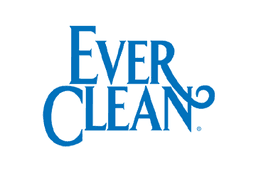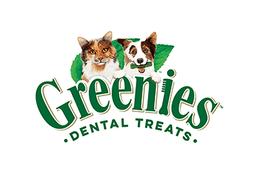Curly Coated Retriever

At a time where hunting birds with rifles was popular in the United Kingdom, the retriever breeds were an important asset to hunters. Curly coated retrievers became very popular due to unmatched hunting abilities and their water repellant, tightly curled coat. It is thought that their ancestry included St Johns Newfoundland, Old English Water Dog, Poodle, and Irish Water Spaniel.
They were introduced into Australia in the late 1800’s where they quickly gained popularity as hunting dogs, and in more recent times as working dogs in fields such as drug sniffing, search and rescue and therapy dogs. Today they are popular family companions, with naturally affectionate and enthusiastic temperaments.
Curly Coated Retriever Facts & Characteristics
| Characteristic | Detail |
|---|---|
| Origin | United Kingdom, 1800’s |
| Dog Breed Group | Gun dog group, hunting, retrieving |
| Height | 64-69cm high |
| Weight range | 23-41kgs |
| Life expectancy | 10-12 years |
| Colours | Black, liver |
| Coat | Short, curly, minimal shedding |
| Temperament | Independent, enthusiastic, loving |
| Exercise requirements | High |
| Best suited for | Active households with time to play |
| Apartment friendly | Better suited to large properties |
Personality
Like many of the working breeds Curly Retrievers are intelligent with an independent streak no doubt required to help them solve problems when in the field. This combined with an energetic and enthusiastic nature means they are best suited to an active household of experienced dog people. Their natural Joie de vivre often makes them seem like an eternal puppy, so be prepared for play time well into adulthood.
Curly Coated Retrievers are loyal companions and alert watch dogs around the house, so can be slow to warm to strangers. They aren’t known for barking excessively when happy, but they do have a quite a big bark.
Their natural athleticism and large size means they are a dog better suited to larger properties.
With hunting ancestry, show caution introducing them to other animals and small pets. Socialisation with other animals, dogs, people, and places from an early age is an important way to help the Curly become better accustomed to different characters and situations later in life.
Overall, the Curly Coated Retriever will be happiest in an active household with lots of playtime and space to romp. Somewhere for a swim is a big bonus, as they are known water lovers.
Grooming
With a minimally shedding coat that is naturally water repellant, Curly Coated Retrievers are quite low maintenance. Brushing the curls can make them frizzy (just ask anyone with curly hair!).
Ideally, an occasional bath with a gentle dog friendly shampoo should be all that is needed to help keep the coat in top shape. Leaving the curls to air dry keeps them looking their best. Trimming any wayward curls away from the face and genitals helps keep them neat and tidy.
It is important keep your Curly Coated Retriever on flea and tick control year-round as it will be difficult to see parasites amongst the curls.
Common Health Concerns
Curly Coated Retrievers are prone to skin and ear problems including allergies and infection. The first thing noticed often is an itchy dog. Arthritis is often common in the athletic and large Curly Coated Retriever.
Did you know?
Although they look similar to other retrievers like Golden Retrievers and Labradors, the gorgeous Curly Coated Retriever really developed as a breed in its own right and is regarded as the oldest retriever, featuring in artwork some 300 years ago.
Curly Coated Retriever FAQs
Where can I get a Curly Coated Retriever?
Even though they are a pure breed of dog, there may be breed-specific rescue organisations dedicated to rehoming Curly Coated Retrievers. Another option is to check your local animal shelters, rescue groups and humane societies for Curly Coated Retrievers or other medium-large dogs looking their forever home.
Do Curly Coated Retrievers bark a lot?
Curly Coated Retrievers have a big bark and they will use it to alert you of activity around the house, such as someone at the door. Excessive barking may occur out of boredom or loneliness so it is really important that your pup has lots of exercise, entertainment and company to keep their mind and body occupied.
Are Curly Coated Retrievers easy to toilet train?
Every puppy is unique, and some will pick up toilet training quicker than others. In saying that, Curly Coated Retrievers are known for being smart and fast learners, so toilet training shouldn’t be too difficult! Start early, be consistent and patient and your Curly will get the hang of it.
Are Curly Coated Retrievers inside or outside dogs?
The optimal situation for a Curly Coated Retriever is access to indoors and outdoors. They’re an active breed, so a good romp around the yard will be appreciated, but they also love company so during their downtime will love to lay at your feet while you watch telly.
How much should you exercise a Curly Coated Retriever?
Curly Coated Retrievers are an energetic pup that loves to be busy. Running through the dog park, long walks, swims, and lots of active play is important. They are best suited to an energetic household with plenty of time for activities!
How much do Curly Coated Retrievers shed?
They are minimal shedders which make them a popular choice for people who don’t have a lot of time for complicated grooming regimes.
Can you leave a Curly Coated Retriever alone at home?
Curly Coated Retrievers love company, so long days at home may result in a lonely pup. With exercise, plenty of great chew toys and company, it may be possible to leave your Curly at home alone but if you are out all the time, a Retriever may not be the pup for you – or maybe you need two!
Who is a Curly Coated Retriever best suited?
They are best suited to an energetic household with plenty of time for activities!




























